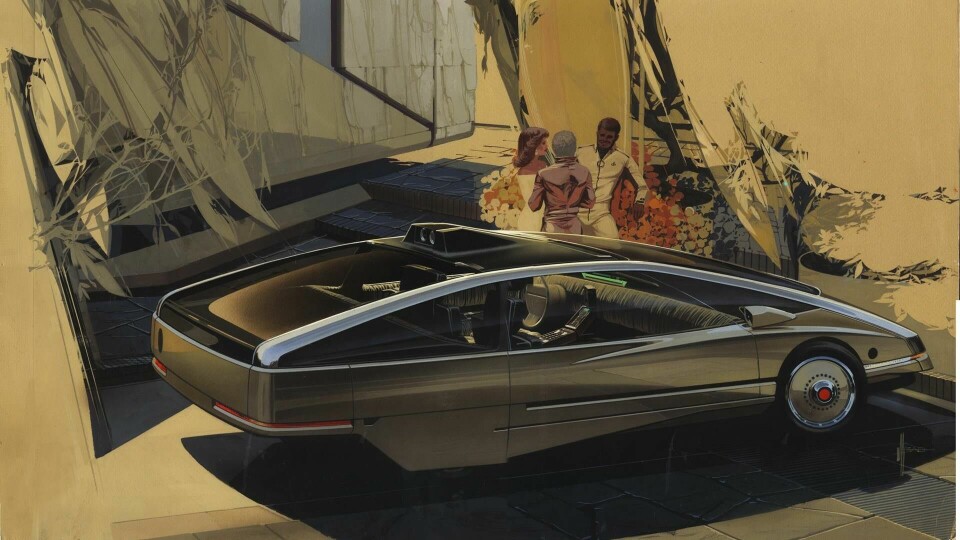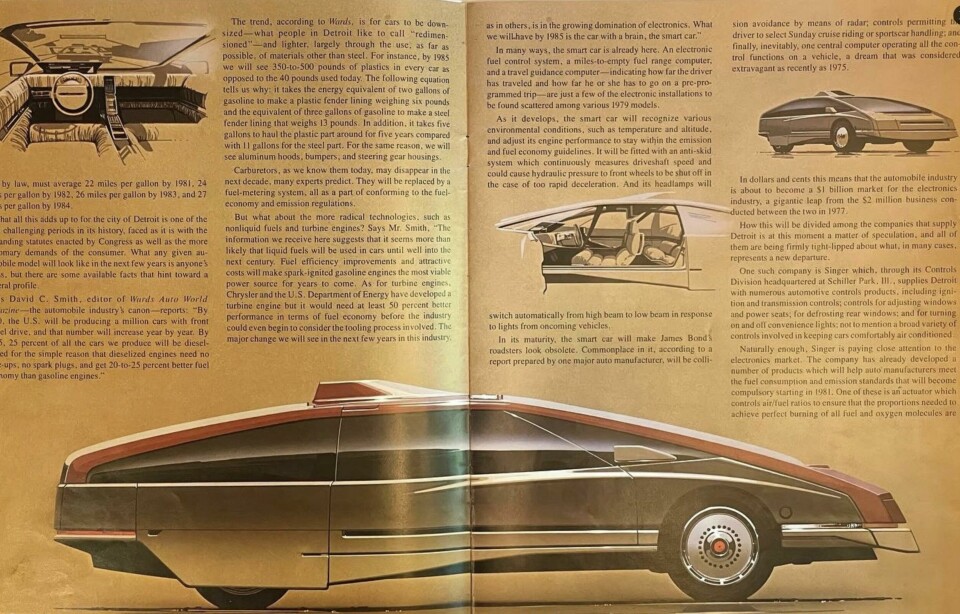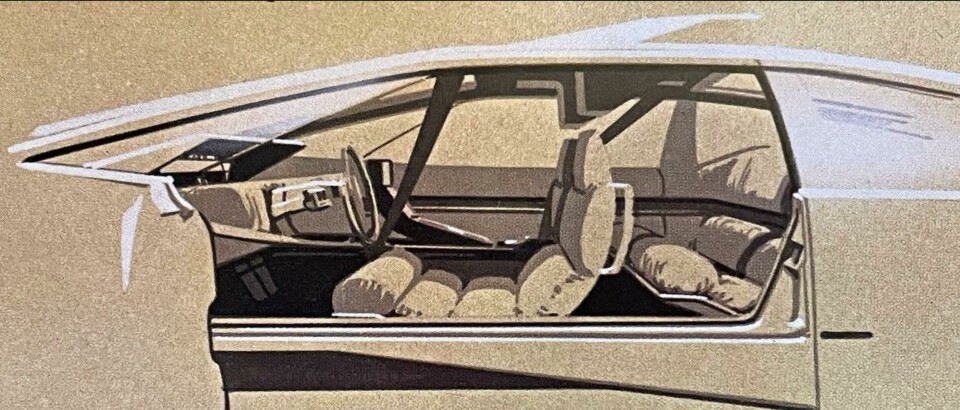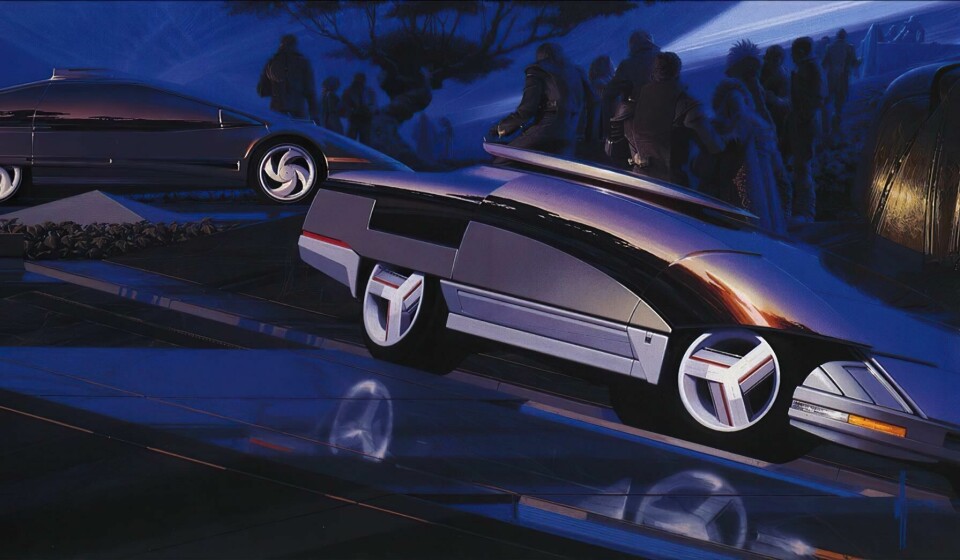
Flashback: Syd Mead's Singer Smart Car
Was this Syd Mead’s Singer the first smart car’ design?
The term ‘smart car’ is much in discussion these days, even if the definition of ‘smart’ is still in development. In general, one could describe a car as ‘smart’ if it can communicate with driver and passengers, other vehicles, and infrastructure. By this definition, a ‘smart car’ is, like the term, still very much in development.
Just when the discussion about smart cars began is a matter of debate, but one very early example is from an article in Singer magazine back in 1978. That article, sponsored by Singer Electronic Controls, predicted the ‘smart car’ of tomorrow, one that would have traction control, collision avoidance systems, engines and power controls that automatically adjusted to weather conditions, and sensors and radar that connected the car to the sensors around it.

Additionally, the article predicted an explosion in the number of electronic components that car would need and the vast opportunities available to electronics manufacturers in the coming decades.
It was a remarkably prescient article, one that anticipated some systems that did not yet exist- and still don’t. It wasn’t perfect, of course. The article predicted diesel engines as the powerplant of the future, and the idea of mobile phones and mobile phone telephony was still the stuff of science fiction, as was the notion of an electric car- not even mentioned in the article.
For automotive designers, this article might have been merely a puff piece for Singer Electronics except for the illustrations that accompanied the piece. Singer had commissioned Syd Mead to provide a vision for the smart car.
Mead provided a design for a personal luxury coupe (a format then at its zenith in the American marketplace) with dramatic arched profile – a “one bow” design we might say these days with an ultra-luxe interior.

On the roof was a design element that we are only now addressing in the design of cars- sensors and radar housings. Mead included these not just in his renderings for Singer. Many of his designs included such housings or a dramatic periscope design. Mead was amoung the first to see that such advanced sensor systems would need to find a design expression in automotive design, and that such elements would change the shape of the roof, and therefore the design of the whole exterior of the car, in dramatic ways.

Today, we are just seeing these sensor units find their way into the design of cars. Most are hidden behind vestigial grilles. But some elements are appearing above the windscreen, as on the just-released Zeekr 007 sedan. Further integration and (hopefully) miniaturisation will invite more design solutions to be incorporated into the roof structures of future car designs. Will their design be as dramatic as Mead’s vision? We can only hope.

All Syd Mead images copyright Syd Mead Inc.






